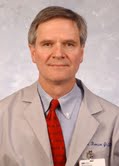While technology has improved health in innumerable areas by leaps and bounds, sepsis has largely been left out. Of course, in an ideal world, patie nts wouldn't contract sepsis in the first place. But the reality is community and healthcare environments are far from sterile.
nts wouldn't contract sepsis in the first place. But the reality is community and healthcare environments are far from sterile.
Sepsis occurs when bacteria find their way into the bloodstream, which can occur when openings and breaks in the skin aren't sterile. Bacteria enter the body and escape local containment, triggering a full-body immune response which, left unaddressed, can be fatal.
Sign up for our FREE E-Weekly for more coverage like this sent to your inbox!
By the time clinicians detect symptoms of sepsis, the clock is already ticking. To treat sepsis, the bacteria and an effective antibiotic for treatment must be identified.
According to Richard Thomson, PhD, a sepsis expert and pathologist at Chicago area-based NorthShore University HealthSystem, the unfortunate challenge of sepsis diagnosis is rapidly detecting bacteria in the blood. Bacterial counts can be very low. In most sepsis episodes, bacteria are only intermittently present in easily detectable levels in the bloodstream, as they are filtered out in the organs.
To treat sepsis, clinicians must first collect blood samples from the patient to isolate the cause of the infection. In this process, time is of the essence. But sepsis detection technology is somewhat behind what one might expect.
The traditional method of sepsis detection, bacterial cultures, takes two days — one for bacterial identification, and another to test effective antibiotics for the particular case. This is valuable time lost in treatment of the patient's condition.
Several biotechnology companies are investing in rapid testing products, including Nanosphere, which has created a rapid-testing system, Verigene, which identifies bacteria and antibiotic resistance based on genetic markers.
While genetic testing is certainly a faster way of diagnosing sepsis, the technology hasn't been fast to permeate the market. Dr. Thomson suspects this is because resources are not appropriated due to incomplete information. "Every day is a challenge," says Dr. Thomson. "Hospitals have many, many resources available, determining how to use them optimally is an ongoing process."
For better diagnosis of sepsis, Dr. Thomson hopes to see more sharing of information among medical staff and administrators to determine areas of need in sepsis diagnosis and care. Cooperative efforts can lead to the applications of new technologies to sepsis diagnosis and the continued development of faster, more accurate testing. "We need cooperation from everyone to improve sepsis care. We can't let everyone work in individual bubbles," he says.
More Articles on Quality:
Relationship With Physician Boots Patient Satisfaction
ECRI Releases Top 10 Health Technology Hazards

